I have some silly question that I hope someone can answer.
If a coord, connected to the wall socket, is damaged exposing the wires inside, and one accidentally touches these wires, would the current going through the body to the ground be lethal. I would assume it is, but I have read that the resistance of the human skin is 100,000 ohms, which means the current through the body would be 240V/100,000ohms = 2.4 mA . I also read that lethal current through the body is around 15 mA, so 2.5 mA quite low?
If I am insulated from ground (for example standing on a chair), what would happen if I shove a fork in to the power outlet (or some other metal so that the power is short circuited). Would I be unharmed because the current would not go through me because I am not connected to ground? (Of course the fuse would break immediately, but lets assume that there are no safety-systems).
The article on a website mentions that in this circuit

the guy does not get electrocuted, but in this image

he does get electrocuted. Why is this? In the first Image the person is connected to ground (0) and is also holding the the high voltage line (240V), so the electrons/current would want to flow through him I would assume?